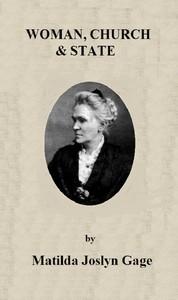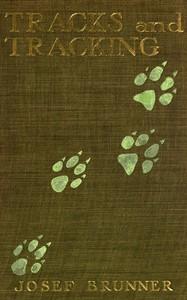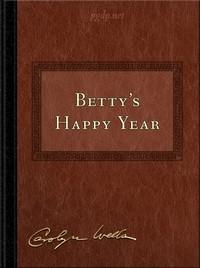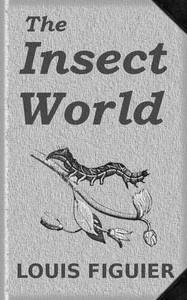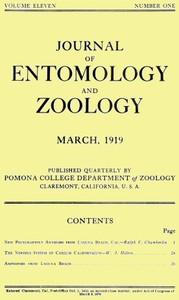|
|
Read this ebook for free! No credit card needed, absolutely nothing to pay.Words: 117565 in 11 pages
This is an ebook sharing website. You can read the uploaded ebooks for free here. No credit cards needed, nothing to pay. If you want to own a digital copy of the ebook, or want to read offline with your favorite ebook-reader, then you can choose to buy and download the ebook.

: Woman Church & State The Original Exposé of Male Collaboration Against the Female Sex by Gage Matilda Joslyn - Women's rights United States; Women's rights; Women and religion; Women History; Women's rights Religious aspects@FreeBooksWed 07 Jun, 2023 In ch. i. we have a vivid picture of the distress of Zion, after all is over. The poet does not describe the events of the siege, nor the horrors of the capture, but the painful experience of subjection and tyranny which followed. Neither this nor ch. ii. is strictly a "dirge." Zion is not dead. She is personified as a widowed princess, bereaved and desolate, sitting amid the ruins of her former joys, and brooding over her calamities. From verse 11c to the end she herself is the speaker:-- "O come, ye travellers all! Behold and see If grief there be like mine!" She images her sorrows under a variety of metaphors ; ascribing all her woes to Yahweh's righteous wrath, provoked by her sins, and crying for vengeance on the malicious rivals who had rejoiced at her overthrow. "Ah, how doth gold grow dim,-- The finest ore change hue!" The poet shows how famine and the sword desolated Zion . All was Yahweh's work; a wonder to the heathen world, but accounted for by the crimes of prophets and priests , who, like Cain, became homeless wanderers and outcasts . Vainly did the besieged watch for succours from Egypt ; and even the last forlorn hope, the flight of "Yahweh's Anointed," King Zedekiah, was doomed to fail . Edom rejoiced in her ruin ; but Zion's sin is now atoned for , and she may look forward to the judgment of her foe . Verse 6d, perhaps: "And their ruin tarried not" ; cf. Pro. xxiv. 22. Verse 7d: "Their body" "was a sapphire:" see Ct. v. 14; Dn. x. 6. Verse 9: "Happier were the slain of the sword Than the slain of famine! For they" , "they passed away" "with a stab" , "Suddenly, in the field" . Verse 13, add after ; cf. Ju. xiv. 4; Jer. xxii. 16. Verse 17c: "While we watched" "continually:" . Verse 18: "Our steps were curbed" "from walking In our open places" ; "The completion of our days drew nigh" , "For our end was come" . Verse 21, Septuagint om. Uz ; "Settler in the Land!" . Verses 5 f. transpose and read: "To adversaries" "we submitted, Saying" , "'We shall be satisfied with bread'" ; "The yoke of our neck they made heavy" ; "We toil, and no rest is allowed us." Verse 13: "Nobles endured to grind, And princes staggered under logs" . Verse 19, "But Thou..." Psalm cii. 13 . Verse 22, omit ; dittogr. of following . Chapters ii. and iv. can hardly be dated earlier than the beginning of the Persian period. They might then have been written by one who, as a young man of sixteen or twenty, had witnessed the terrible scenes of fifty years before. If, however, as is generally recognized, these poems are not the spontaneous and unstudied outpourings of passionate grief, but compositions of calculated art and studied effects, written for a purpose, it is obvious that they need not be contemporary. A poet of a later generation might have sung of the great drama in this fashion. The chief incidents and episodes would be deeply graven in the popular memory; and it is the poet's function to make the past live again. There is much metaphor , and little detail beyond the horrors usual in long sieges Acquaintance with the existing literature and the popular reminiscences of the last days of Jerusalem would supply an ample foundation for all that we find in these poems. A relic of the old "open-field" system of agriculture survives in the so-called "Lammas Lands." These were lands enclosed and held in severalty during the growing of corn and grass and thrown open to pasturage during the rest of the year for those who had common rights. These commoners might be the several owners, the inhabitants of a parish, freemen of a borough, tenants of a manor, &c. The opening of the fields by throwing down the fences took place on Lammas Day for corn-lands and on Old Midsummer Day for grass. They remained open until the following Lady Day. Thus, in law, "lammas lands" belong to the several owners in fee-simple subject for half the year to the rights of pasturage of other people . The whole length of the bird is from 43 to 46 in., of which, however, about 20 are due to the long cuneiform tail, while the pointed wings measure more than 30 in. from the carpal joint to the tip. The top of the head is white, bounded by black, which, beginning in stiff bristly feathers turned forwards over the base of the beak, proceeds on either side of the face in a well-defined band to the eye, where it bifurcates into two narrow stripes, of which the upper one passes above and beyond that feature till just in front of the scalp it suddenly turns upwards across the head and meets the corresponding stripe from the opposite side, enclosing the white forehead already mentioned, while the lower stripe extends beneath the eye about as far backwards and then suddenly stops. A tuft of black, bristly feathers projects beardlike from the base of the mandible, and gives the bird one of its commonest epithets in many languages. The rest of the head, the neck, throat and lower parts generally are clothed with lanceolate feathers of a pale tawny colour--sometimes so pale as to be nearly white beneath; while the scapulars, back and wing-coverts generally, are of a glossy greyish-black, most of the feathers having a white shaft and a median tawny line. The quill-feathers, both of the wings and tail, are of a dark blackish-grey. The irides are of a light orange, and the sclerotic tunics--equivalent to the "white of the eye" in most animals--which in few birds are visible, are in this very conspicuous and of a bright scarlet, giving it an air of great ferocity. In the young of the year the whole head, neck and throat are clothed in dull black, and most of the feathers of the mantle and wing-coverts are broadly tipped and mesially streaked with tawny or lightish-grey. The l?mmergeyer breeds early in the year. The nest is of large size, built of sticks, lined with soft material and placed on a ledge of rock--a spot being chosen, and often occupied for many years, which is nearly always difficult of access. Here in the month of February a single egg is usually laid. This is more than 3 in. in length by nearly 2 1/2 in breadth, of a pale but lively brownish-orange. The young when in the nest are clad in down of a dirty white, varied with grey on the head and neck, and with ochraceous in the iliac region. FOOTNOTES: Free books android app tbrJar TBR JAR Read Free books online gutenberg More posts by @FreeBooks
: Betty's Happy Year by Wells Carolyn Birch Reginald Bathurst Illustrator - Teenage girls Juvenile fiction@FreeBooksWed 07 Jun, 2023
|
Terms of Use Stock Market News! © gutenberg.org.in2025 All Rights reserved.

